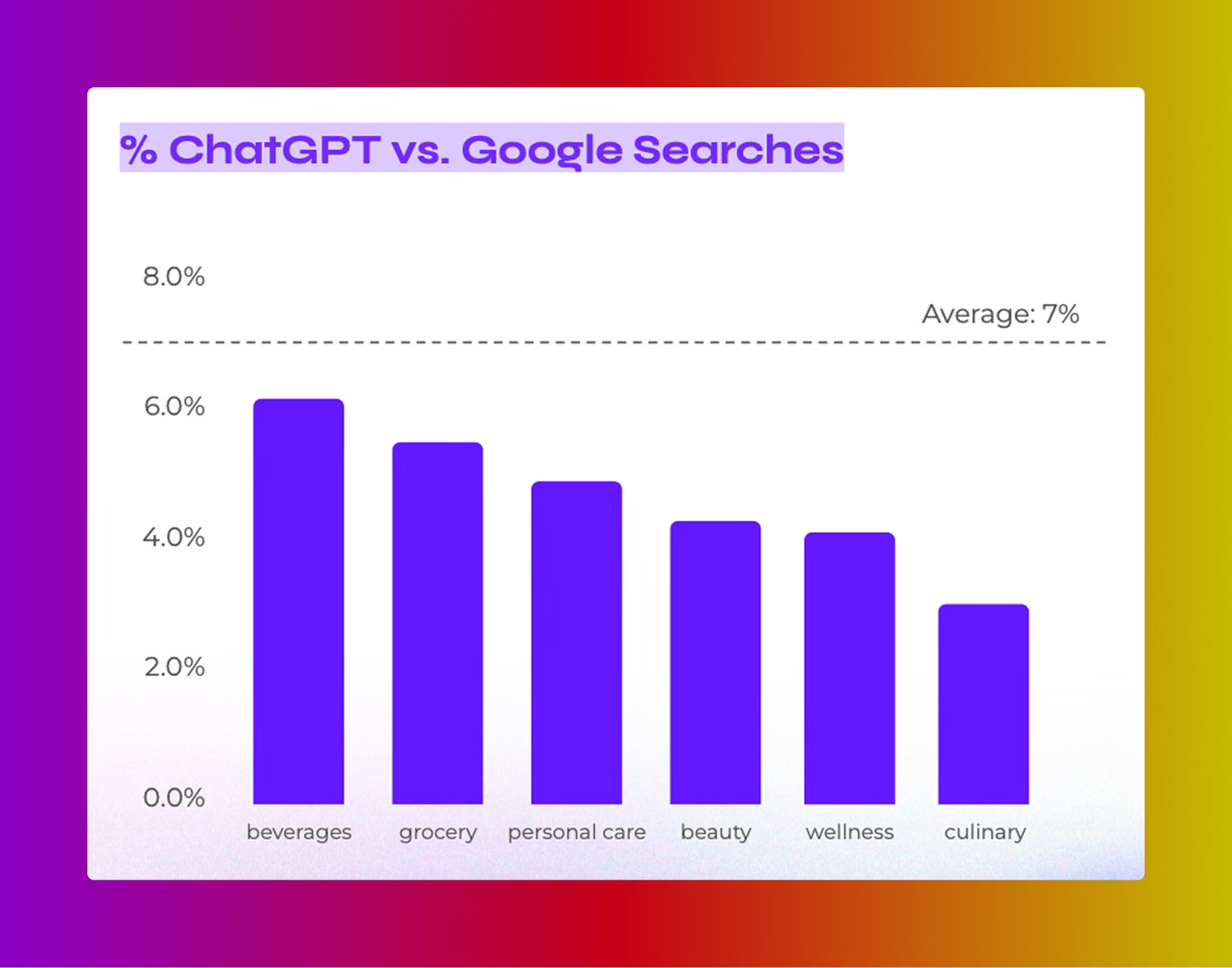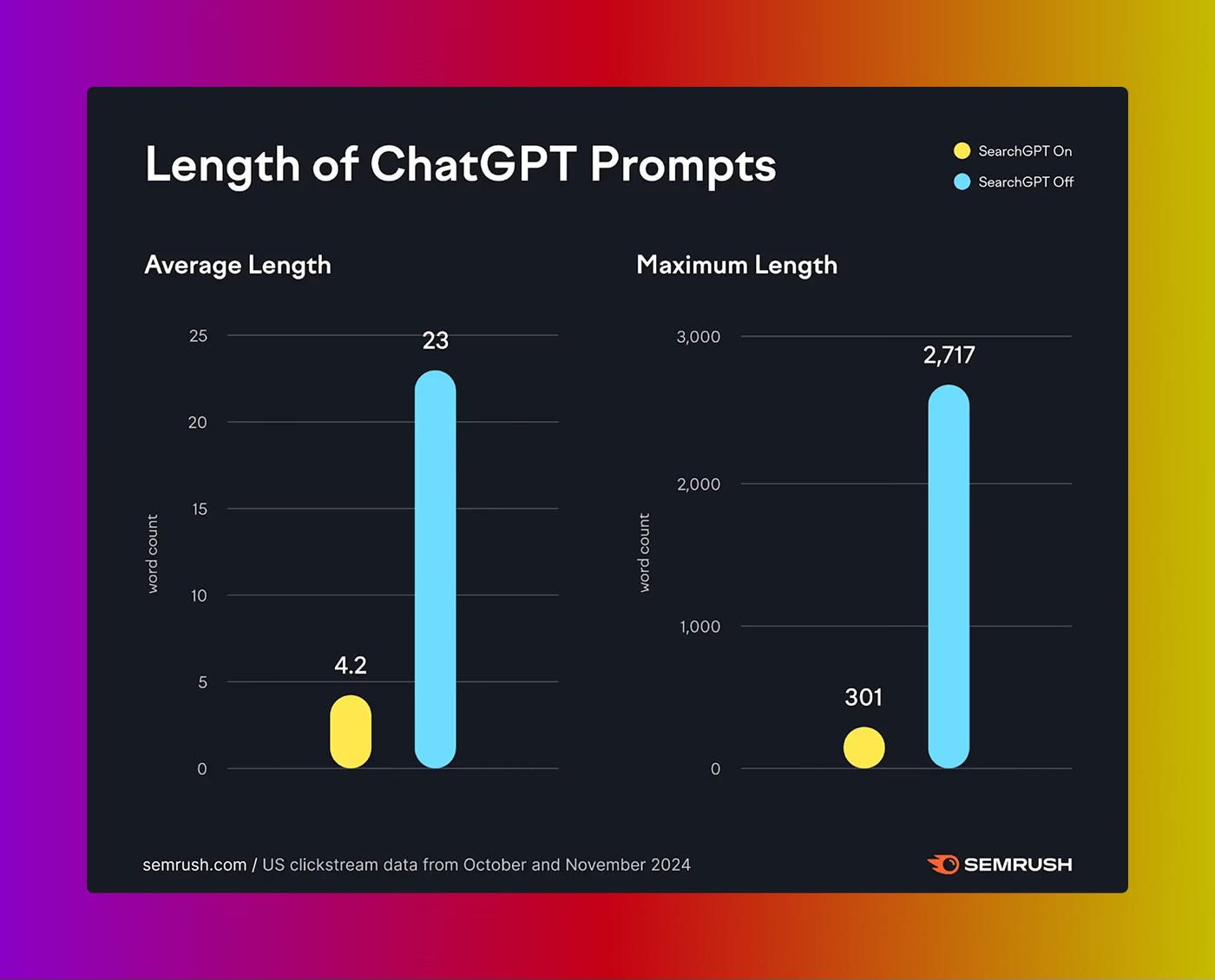The AI Beauty Edit: AI-Powered Product Discovery Demands a New Playbook
AI search is compressing the discovery funnel, shifting how consumers search for products and rewarding brands whose content show up as the answer (and not just another search result.)
I spent the weekend exploring New York City and although I missed this past weekend’s Beauty New York, I got to do a lot of other things like:
Tried Katz’ Deli pastrami sandwich - incredible
Saw The Great Gatsby on Broadway
Caught Date Night at The MET (didn’t make it onto the Rooftop Garden) 😭
Managed to get a workout in 💪
Beauty New York really ought to be in LA, anyway! As for this week on Beauty Active, I’ve been thinking about the intersections of AI within beauty, and was interested to read about some of the latest insights on AI in beauty search. Hope you enjoy!
AI Search is Reshaping Product Discovery
According to a recent trend report from Spate titled AI Search in Beauty, ChatGPT comprises roughly 7% of all web-based searches per day.
This is based on data from NP Digital which cites that in 2025, ChatGPT has processed roughly one billion searches per day, compared to Google Search which continues to dominate the channel, processing roughly 14B searches daily.
While that 7% may sound small, it represents a significant shift in terms of user behavior, particularly in the role that AI models like ChatGPT play in discovery:
Search gains context - Moving away from keywords and search terms, shoppers are asking full, nuanced questions about specific scenarios
AI models acting as advisors - Beyond just a search engine, shoppers are likely to rely on AI models for real decision-making: Using outputs as advice vs just information
Shrinking surface area for results - Rather than users self-serving from a list of 10+ search results, the tighter AI search funnel surfaces only one or two suggestions, making overall discoverability harder moving forward as AI “re-bundles” traditional search into synthesized, narrative-style outputs
Beauty Under-Indexing in AI Search Signals New Opportunity
Of these 1 billion searches, Spate reports that product categories like Beauty, Wellness, and Personal Care are under-indexed in terms of their share of searches, with ChatGPT accounting for only 4.3% of search for beauty-related topics.
This low search-share can be a signal of low competition within beauty: putting those brands that are optimizing for AI-powered search ahead of the curve, with the opportunity to set the standard. However, visibility here isn’t just about showing up. It’s showing up the way that users are searching: with conversational context.
Breaking Habits: The AI Search Shift
Recent data from SEMRush shows a second shift currently underway: users are still carrying their old search habits when engaging with AI search tools, but this will quickly change.
The data shows that when utilizing SearchGPT (which is ChatGPT’s chat-based web-search), users actually tend to use fewer words than when this option is turned off.
What does this mean?
Word count when SearchGPT is turned on = 4 words
Word count when SearchGPT is turned off = 23 words
From my perspective, this is indicative of learned search behavior. Users are cutting their word counts when searching because this is how they currently understand search to work best — you can thank Google for that — a concise set of keywords to pinpoint specific results.
However, SearchGPT is fully capable of more expansive, nuanced search queries with conversational structure and contexts, and this is how they already use it when not toggling the search function.
I believe users want to search conversationally and will gradually learn to stop self-moderating their queries as AI-search becomes commonplace. Google’s latest AI Mode chat tool is actively inviting us to begin searching this way, along with competitors like Reddit Answers. This is a shift worth watching.
Brands that learn to mirror this emerging search style and provide content that matches it will be in the best position to ultimately be included in final AI outputs.
Optimizing Your Brand’s Content for AI Search
With AI search gradually changing the way shoppers discover products, the purchase funnel is compressing; reducing the time spent between awareness and conversion as AI search results present synthesized answers with only one or two recommendations, and shoppers readily accepting them as sage advice.
That answer could include your product, or your competitor’s.
That’s why it’s important to become familiar with a new term to address this challenge: Generative Engine Optimization (GEO). Effectively, GEO refers to the emerging set of strategies and tactics that may help your brand show up better within AI-generated search results, where results aren’t ranked, but recommended, and conversational AIs act more as advisors.
“GEO builds on traditional SEO but shifts the focus to align with how AI-enabled search platforms rank and showcase content… GEO is about ensuring your content is the answer GEs choose to generate.”
Adam Binder, Founder of Creative Click Media, written for Forbes
The term might be new, but the strategy isn’t. (Not really.) In my opinion, GEO is simply an evolution of today’s SEO best practices which every top marketer has already been advocating for long before the widespread availability of AI for product search. It boils down to content formats and the overall digital footprint your brand has within relevant topics. Content written and recorded for real people.
This is how I view the two biggest content shifts when it comes to optimizing content for AI search results:
Multi-Modal Content — Beyond long-form blogs focused on keywords, rich, multi-media content is critical (for GEO but also SEO generally.) Consider, what formats is your content available in for an AI platform to reference? Within traditional SEO, content imagery, audio, video, and text are the very basics, so I’ll focus on the newer formats more relevant to GEO:
Text: How is your brand being discussed? - Beyond blog posts, news articles, or press releases, newer within AI synthesis is also how your brand is being discussed in secondary arenas like: product reviews, online forums, and social media feeds.
Data Files: What in-depth information about your brand or products is available for deep questions? - With the advent of PhD-level research tools now available at your fingertips with ChatGPT, data files such as PDFs, PowerPoint slides, and spreadsheets are all fair game — So how are you showing up?
Deep Research queries will only become more common especially as tools like ChatGPT Pulse are now enabling background tasks to do things like shopping and information-finding overnight.
As such, you should consider anything structured and labeled as potentially useful for this purpose, whether it’s ingredient lists, pitch decks, influencer guidebooks, or product whitepapers, this more in-depth media is the perfect material to answer deep questions that users may be tasking their personal AI agents to uncover.
Conversational Content — I’ve always hated listicles and other canned copywriting formats because of how inauthentic they feel. Fortunately, with AI search synthesis, the focus is now shifting to content that answers questions in a way that addresses how real people ask questions. I think that means original, more authentic material will start to win out over gamified, keyword-stuffed content because of how it’s written or otherwise presented.
Example: Top results won’t be canned articles optimized for “best toners for oily skin,” but rather deep-linked, personal musings from bloggers, commenters, and reviewers coming together to answer “What’s a good toner for oily skin that won’t dry me out in winter?”
Your content should be more nuanced, tapping into the real needs of actual shoppers, as opposed to catering to blackbox algorithms. Additionally, this content needs to become ubiquitous in an environment of generative AI synthesizing sources; where your brand or products are positioned as the solution in not one lone post on your owned channels, but across the unowned social landscape as well.
The New Playbook for Discovery
Beauty may be under-indexed in AI-search today, but that won’t last. As platforms like ChatGPT, Perplexity, and Google AI Mode evolve, beauty’s presence in search will expand. What we’re seeing today is just the start.
If your brand already has strong foundations with SEO, then you’re not starting from scratch. But in a generative-first world, I think the key areas to focus your efforts are:
Writing the way people speak, with full questions and scenarios; never keyword stuffing
Structuring content for AI synthesis; easy to cite, quote, or recombine for multiple formats and platforms
Showing up across different kinds of media; beyond short-form vertical video, and experimenting with structured docs and spreadsheets + especially having a presence in forums and comment sections
As AI re-bundles discovery, the brands that are surfaced won’t just be GE-optimized, but will be contextually understood. Those are the brands providing answers, and not just keyword results.





